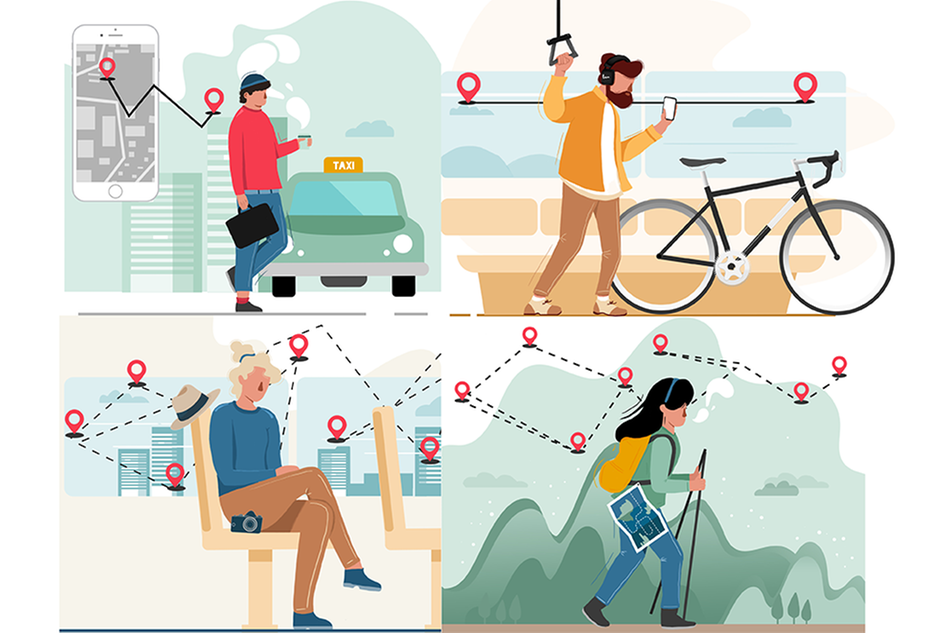Healthcare journeys for young adults with mental health challenges – four different paths through the system
What does the path to the right support look like for young adults seeking help for mental health issues? That’s the question researchers at Halmstad University have explored in the research project PadAI. Through interviews with young adults, the researchers show that healthcare journeys can take many forms – from straightforward and secure paths to complicated and winding routes where individuals never quite reach the help they need.
“A healthcare provider told me that I needed help they couldn’t offer and that they didn’t want to start something they couldn’t finish.”
One of the participants in the study
An increasing number of young adults in Sweden are struggling with mental health challenges, but far from all receive the support they need. In the project PadAI – a collaboration between Halmstad University, Capio Ramsay Santé and Region Halland – researchers at the University have interviewed 25 individuals aged 20 to 30 about their experiences of seeking help.
“We wanted to understand how the healthcare system actually works from the perspective of young people. To make their stories more visual and easier to grasp, we used travel metaphors to describe different types of healthcare journeys”, says Katrin Häggström Westberg, Senior Lecturer in Nursing.

Four types of healthcare journeys
The study identified four different types of healthcare journeys. “Taxi riding” and “Commuting” describe two different but equally smooth routes to mental healthcare. The taxi journey represents fast, instant help – from point A to point B without interruption. The commuting journey reflects a longer-term need for support, with ongoing contact over time, where the system works and support is available when needed.
Not all journeys, however, are as straightforward. “Sightseeing” and “Backpacking” journeys are marked by uncertainty, long waiting times, and the feeling of being passed between different parts of the system. The sightseeing journey reflects a lack of control – the young adult struggles to influence where they’re headed, how long they can stay, and whether they’ll even be allowed into the system. The backpacker takes initiative, contacting multiple healthcare providers, but still doesn’t receive the help they need.
“Many describe having to take the lead themselves in order to access support”, says Katrin Häggström Westberg.
Healthcare that doesn’t meet the need
The sightseer and backpacker experiences have something in common: not feeling listened to or forced to take detours due to rigid system structures.
“A healthcare provider told me that I needed help they couldn’t offer and that they didn’t want to start something they couldn’t finish”, one participant explained. This person was then sent back and forth between different services without receiving actual support.
Another participant said they had ended contact with healthcare providers on several occasions because they felt the support wasn’t helpful, or that professionals failed to understand their problems.
“Many of those we interviewed feel that they don’t get the help they need. As a result, they continue searching. This causes frustration for the individual and puts pressure on the healthcare system through multiple visits to different providers”, Katrin Häggström Westberg adds.
The need for person-centred healthcare
A key conclusion of the study is that the help-seeking process is currently more guided by the healthcare system than the individual’s needs and circumstances. A rigid structure benefits those who can navigate it and whose problems fit neatly into predefined boxes, while others risk being left behind.
“We need more knowledge about how help-seeking actually works in practice, and how the system can become more responsive and flexible”, says Lena Peterson, Senior Lecturer in Health Education and Project Leader for PadAI.
The research group also highlights the potential of AI in future solutions. Further studies within PadAI are underway, exploring how technology can help provide the right support at the right time.
Text: Emma Swahn
Illustration: Caroline Karlsson
More information
PadAI is a research and collaboration project aimed at improving mental health among young adults. The project is run by Halmstad University, Capio Ramsay Santé and Region Halland, and funded by the Knowledge Foundation.
It is part of the research programme Information Driven Care (IDC) and the research profile CAISR Health at Halmstad University.
Authors of the study:
- Lena Peterson, Senior Lecturer in Health Education and Project Leader
- Katrin Häggström Westberg, Senior Lecturer in Nursing
- Katerina Cerna, Associate Senior Lecturer in Participatory Design
- Mikael Ahlborg, Senior Lecturer in Nursing
- Julia S. Malmborg, Associate Senior Lecturer in Health Innovation
- Petra Svedberg, Professor of Nursing
Research programme at Halmstad University: IDC – Information Driven Care


